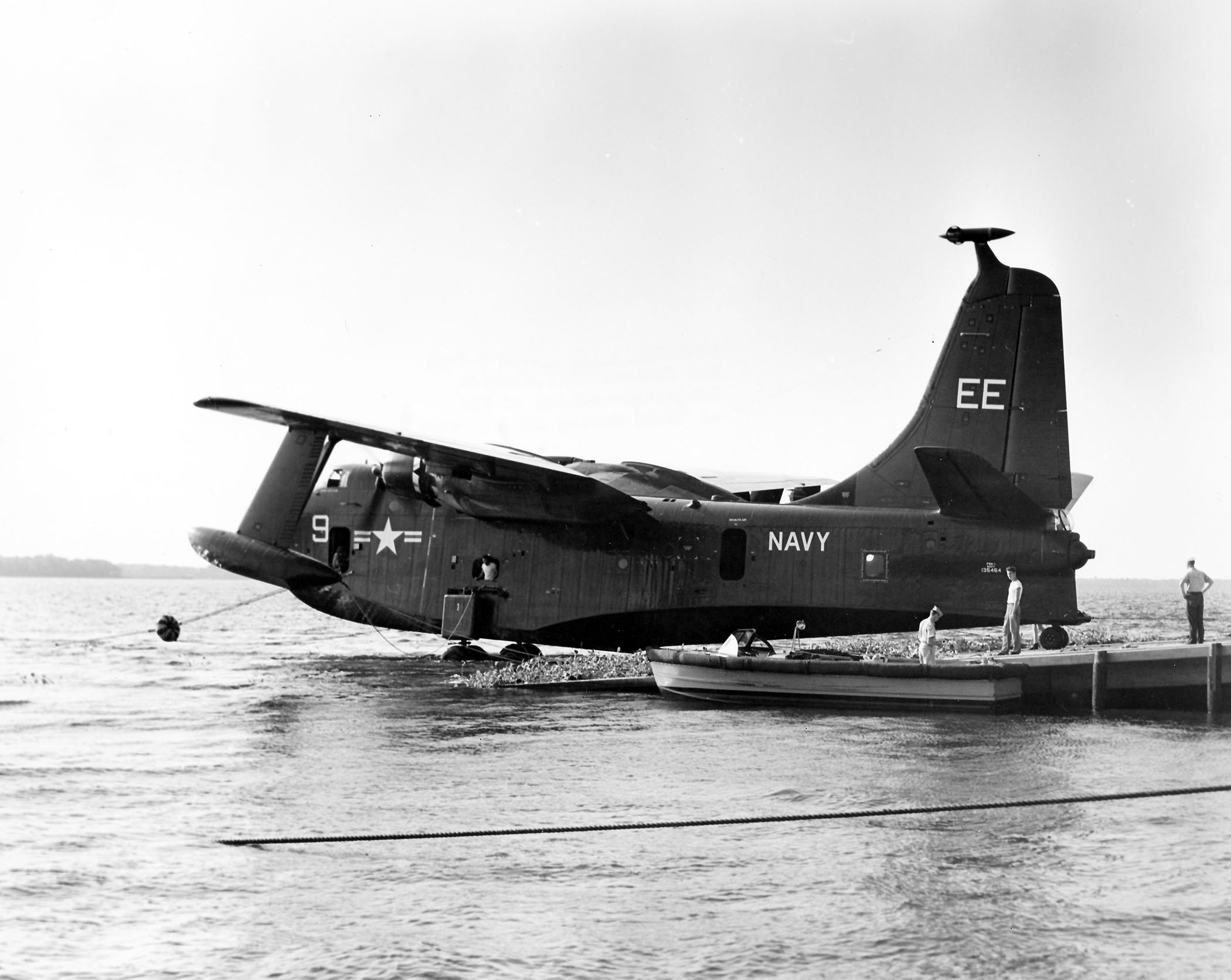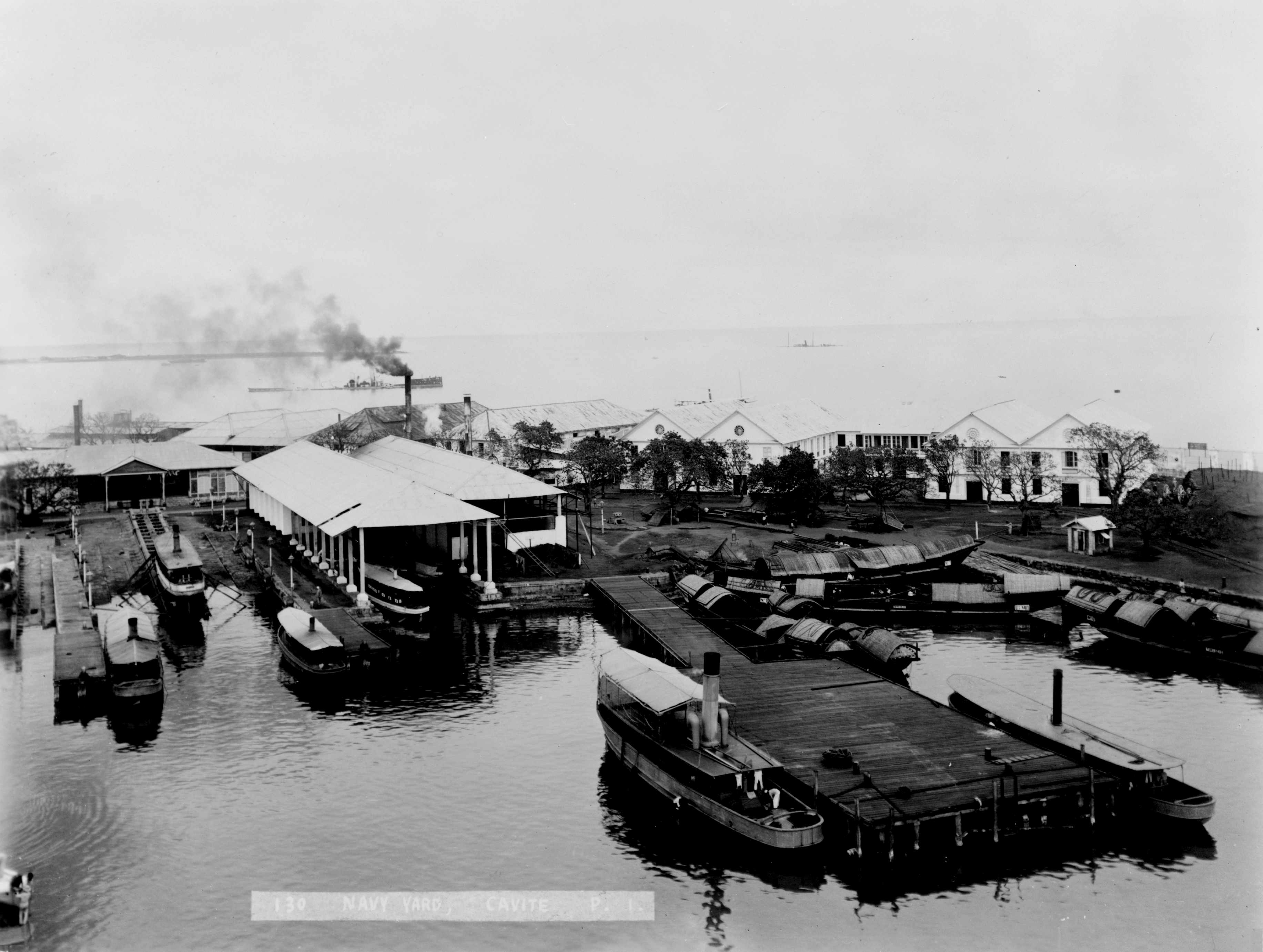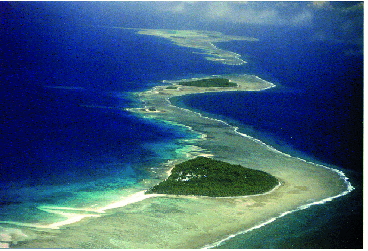|
Vp-42
VP-42 was a Patrol Squadron of the U.S. Navy. The squadron was established as Patrol Squadron 22 (VP-22) on 7 April 1944, redesignated Patrol Bombing Squadron 22 (VPB-22) on 1 October 1944, redesignated Patrol Squadron 22 (VP-22) on 15 May 1946, redesignated Medium Patrol Squadron (Seaplane) 2 (VP-MS-2) on 15 November 1946, redesignated Patrol Squadron 42 (VP-42) on 1 September 1948 and disestablished on 26 September 1969. Operational history *7 April – 10 June 1944: VP-22 was established at Harvey Point Defense Testing Activity, NAAS Harvey Point, North Carolina, under the operational control of FAW-5, as a seaplane patrol squadron equipped with the Martin PBM Mariner, PBM-3D Mariner. Ground and flight training continued at Harvey Point until 1 June 1944, when the squadron was relocated to NAS Key West, Florida, for training in Anti-submarine warfare (ASW). The course was completed on 10 June 1944, and the squadron returned to NAAS Harvey Point. *12–18 July 1944: The squadro ... [...More Info...] [...Related Items...] OR: [Wikipedia] [Google] [Baidu] |
Martin P5M Marlin
The Martin P5M Marlin (P-5 Marlin after 1962), built by the Glenn L. Martin Company of Middle River, Maryland, is a twin piston-engined flying boat that entered service in 1951, and served into the late 1960s with the United States Navy performing naval patrols. It also served with the United States Coast Guard and the French Navy, with 285 being produced. Development Built as a successor to the Martin PBM Mariner, PBM Mariner, it had better engines, an improved hull, and a single vertical fin tail. The XP5M Marlin prototypes were based on the last PBM-5 Mariners, the company designation being Model 237. The type was heavily improved, again leading to the P5M-2 (Model 237B), which was redesignated SP-5B. A number of P5M-1 models were also used for training, designated TP-5A (after 1962). Design The Marlin was designed as a Gull wing, gull-winged aircraft to place the engines and propellers high above the spray. Power was provided by two Wright R-3350 radial engines. The rea ... [...More Info...] [...Related Items...] OR: [Wikipedia] [Google] [Baidu] |
Pohnpei
Pohnpei (formerly known as Ponape or Ascension, from Pohnpeian: "upon (''pohn'') a stone altar (''pei'')") is an island of the Senyavin Islands which are part of the larger Caroline Islands group. It belongs to Pohnpei State, one of the four states in the Federated States of Micronesia (FSM). Major population centers on Pohnpei include Palikir, the FSM's capital, and Kolonia, the capital of Pohnpei State. Pohnpei is the largest island in the FSM, with an area of , and a highest point of , the most populous with 36,832 people, and the most developed single island in the FSM. Pohnpei is home to the megaliths and ruined city of Nan Madol, built of artificial islands off the island's eastern shore beginning in the 8th or 9th century. An important archaeological site, it was declared a national historic site in 1985. Pohnpei contains a wealth of biodiversity. It is one of the wettest places on Earth with annual recorded rainfall exceeding each year in certain mountainous loca ... [...More Info...] [...Related Items...] OR: [Wikipedia] [Google] [Baidu] |
United States Fleet Activities Yokosuka
or is a United States Navy base in Yokosuka, Japan. Its mission is to maintain and operate base facilities for the logistic, recreational, administrative support and service of the U.S. Naval Forces Japan, Seventh Fleet and other operating forces assigned in the Western Pacific. CFAY is the largest strategically important U.S. naval installation in the western Pacific. Fleet Activities Yokosuka comprises 2.3 km2 (568 acres) and is located at the entrance of Tokyo Bay, 65 km (40 mi) south of Tokyo and approximately 30 km (20 mi) south of Yokohama on the Miura Peninsula in the Kantō region of the Pacific Coast in Central Honshu, Japan. The 55 tenant commands which make up this installation support U.S. Navy Pacific operating forces, including principal afloat elements of the United States Seventh Fleet, including the only permanently forward-deployed aircraft carrier, , the group she heads, Carrier Strike Group Five, and Destroyer Squadron 15. Hi ... [...More Info...] [...Related Items...] OR: [Wikipedia] [Google] [Baidu] |
Nakagusuku Bay
is a bay on the southern coast of Okinawa Island on the Pacific Ocean in Japan. The bay covers and ranges between to deep. The bay is surrounded by the municipalities of Uruma, Kitanakagusuku, Okinawa, Kitanakagusuku, Nakagusuku, Okinawa, Nakagusuku, Nishihara, Okinawa, Nishihara, Yonabaru, Okinawa, Yonabaru, Nanjō, all in Okinawa Prefecture. In 1852, while visiting the Ryukyu Kingdom, Commodore Matthew Perry mapped Okinawa and labeled Nakagusuku Bay as "Perry's Bay". During the final months of World War II, the bay became a United States Navy forward base and was nicknamed "Buckner Bay". History Buckner Bay In June 1945, American forces Battle of Okinawa, secured Okinawa. Nakagusuku Bay became an important U.S. anchorage. United States Army troops referred to it as "Buckner Bay", in memory of Lieutenant General Simon Bolivar Buckner Jr., commander of U.S. land forces in the campaign, who was killed on 18 June. Naval Base Buckner Bay was built by Naval Mobile Construction Ba ... [...More Info...] [...Related Items...] OR: [Wikipedia] [Google] [Baidu] |
Imperial Japanese Navy
The Imperial Japanese Navy (IJN; Kyūjitai: Shinjitai: ' 'Navy of the Greater Japanese Empire', or ''Nippon Kaigun'', 'Japanese Navy') was the navy of the Empire of Japan from 1868 to 1945, Potsdam Declaration, when it was dissolved following surrender of Japan, Japan's surrender in World War II. The Japan Maritime Self-Defense Force (JMSDF) was formed between 1952 and 1954 after the dissolution of the IJN. The IJN was the third largest navy in the world by 1920, behind the Royal Navy and the United States Navy (USN). It was supported by the Imperial Japanese Navy Air Service for reconnaissance and airstrike operations from the fleet. It was the primary opponent of the Allies of World War II, Western Allies in the Pacific War. The IJN additionally fielded Imperial Japanese Navy land forces, limited land-based forces, including Special Naval Landing Forces, professional marines, Japanese marine paratroopers of World War II, marine paratrooper units, anti-aircraft defense units ... [...More Info...] [...Related Items...] OR: [Wikipedia] [Google] [Baidu] |
Sasebo Naval Arsenal
was one of four principal naval shipyards owned and operated by the Imperial Japanese Navy. History The Sasebo Naval District was established at Sasebo, Nagasaki in 1886, as the third of the naval districts responsible for the defense of the Japanese home islands. After the establishment of the navy base, a ship repair facility was established in 1889 with a dry dock. With the addition of equipment and facilities for ship production by 1897, the "Sasebo Shipyards" were officially established, and renamed the "Sasebo Naval Arsenal" in 1903. Construction of the arsenal was supervised by the o-yatoi gaikokujin, French engineer Louis-Émile Bertin. In 1913, a 250-ton Crane (machine), crane was installed, and the shipbuilding facilities expanded to permit the construction of large warships. With the mothballing of the Maizuru Naval Arsenal due to restrictions by the Washington Naval Treaty, much of the design and prototype work for new classes of destroyers and torpedo boats former ... [...More Info...] [...Related Items...] OR: [Wikipedia] [Google] [Baidu] |
Naval Station Sangley Point
Naval Station Sangley Point was a communication and hospital facility of the United States Navy which occupied the northern portion of the Cavite City peninsula and is surrounded by Manila Bay, approximately eight miles southwest of Manila, the Philippines. The station was a part of the Cavite Navy Yard across the peninsula. The naval station had a runway that was built after World War II, which was used by U.S. Navy Lockheed P-2 Neptune, Lockheed P-3 Orion, and Martin P4M Mercator maritime patrol and anti-submarine warfare aircraft. An adjacent seaplane runway, ramp area and seaplane tender berths also supported Martin P5M Marlin maritime patrol aircraft until that type's retirement from active naval service in the late 1960s. NAS Sangley Point/NAVSTA Sangley Point was also used extensively during the Vietnam War, primarily for U.S. Navy patrol squadrons forward deployed from the United States on six-month rotations. The naval station was turned over to the Philippine gove ... [...More Info...] [...Related Items...] OR: [Wikipedia] [Google] [Baidu] |
Chimu Airfield
Chimu Airfield or NAB Chimu is a former World War II airfield on the Pacific coast of Okinawa. The airfield was inactivated after October 1945. History World War II The Chimu Wan area was captured during the first week of the Battle of Okinawa. The Chimu Wan area was surveyed for possible airbase construction in late April 1945 and the Seabees of the 40th CB commenced construction of a fighter airstrip there on 6 May. Despite periodic Japanese mortar and sniper fire, by 1 July 1945 the base with its 5000 ft runway was ready for use by US Navy fighters. Marine Aircraft Group 22 (MAG-22) was based at Chimu in September 1945. Marine Aircraft Group 31 (MAG-31) was based at Chimu from 1 July 1945 until moving to Yokosuka for occupation duty on 12 October 1945, MAG-31 squadrons included VMF-224 and VMF-311 operating F4Us. VMF(N)-533 flying the radar-equipped Grumman F6F-5N Hellcat operated night defense missions; their new Grumman F7F Tigercats arrived on Okinawa too late ... [...More Info...] [...Related Items...] OR: [Wikipedia] [Google] [Baidu] |
Saipan
Saipan () is the largest island and capital of the Northern Mariana Islands, an unincorporated Territories of the United States, territory of the United States in the western Pacific Ocean. According to 2020 estimates by the United States Census Bureau, the population of Saipan was 43,385. Its people have been United States citizens since the 1980s. Saipan is one of the main homes of the Chamorro people, Chamorro, the Indigenous peoples of Oceania, indigenous people of the Mariana Islands. Saipan has been inhabited for over four thousand years. From the 17th century, the island experienced Spanish Empire#Pacific exploration and trade, Spanish occupation and rule until the Spanish–American War of 1898, when Saipan was briefly occupied by the United States, before being German–Spanish Treaty (1899), formally sold German New Guinea#Imperial German Pacific protectorates, to Germany. About 15 years of German rule were South Seas Mandate, followed by 30 years of Empire of Japan, ... [...More Info...] [...Related Items...] OR: [Wikipedia] [Google] [Baidu] |
Sonobuoy
A sonobuoy (a portmanteau of sonar and buoy) is a small expendable sonar buoy dropped from aircraft or ships for anti-submarine warfare or underwater acoustic research. Sonobuoys are typically around in diameter and long. When floating on the water, sonobuoys have both a radio transmitter above the surface and hydrophone sensors underwater. Sonobuoys are mission-critical platforms for enhancing Undersea Domain Awareness (UDA), providing an effective means to detect, locate, and track submarines and other underwater threats. Playing a key role in anti-submarine warfare (ASW) and other naval operations, they support in maintaining naval security and in protecting naval carrier strike groups. Theory of operation Sonobuoys are ejected from aircraft in canisters and deploy upon water impact. An inflatable surface float with a radio transmitter remains on the surface for communication with the aircraft, while one or more hydrophone sensors and stabilizing equipment descend be ... [...More Info...] [...Related Items...] OR: [Wikipedia] [Google] [Baidu] |
Ulithi Atoll
Ulithi (, , or ; pronounced roughly as YOU-li-thee) is an atoll in the Caroline Islands of the western Pacific Ocean, about east of Yap, within Yap State. Name The name of the island goes back to Proto-Chuukic ''*úlú-diwo''. Overview Ulithi consists of 40 islets totaling , surrounding a lagoon about long and up to wide—at one of the largest in the world. It is administered by the state of Yap in the Federated States of Micronesia. Ulithi's population was 773 in 2000. There are four inhabited islands on Ulithi Atoll. They are Falalop (), Asor ''(Yasor)'', Mogmog ''(Mwagmwog)'', and Fedarai ''(Fedraey)''. Falalop is the most accessible with Ulithi Airport, a small resort hotel, store and one of three public high schools in Yap state. Mogmog is the seat of the high chief of Ulithi Atoll though each island has its own chief. Other important islands are Losiap (), Sorlen ''(Sohl'oay)'', and Potangeras ''(Potoangroas)''. The atoll is in the westernmost of the Caroline ... [...More Info...] [...Related Items...] OR: [Wikipedia] [Google] [Baidu] |
Palau
Palau, officially the Republic of Palau, is an island country in the Micronesia subregion of Oceania in the western Pacific Ocean. The Republic of Palau consists of approximately 340 islands and is the western part of the Caroline Islands, while the eastern and central parts make up the Federated States of Micronesia. It has a total area of , making it the sixteenth smallest country in the world. The most populous island is Koror, home to the country's most populous city of the same name. The capital, Ngerulmud, is located on the largest island of Babeldaob, in Melekeok State. Palau shares maritime boundaries with international waters to the north, the Federated States of Micronesia to the east, Indonesia to the south, and the Philippines to the northwest. The country was originally settled approximately 3,000 years BP by migrants from Maritime Southeast Asia. Palau was first drawn on a European map by the Bohemian missionary Paul Klein based on a description g ... [...More Info...] [...Related Items...] OR: [Wikipedia] [Google] [Baidu] |









